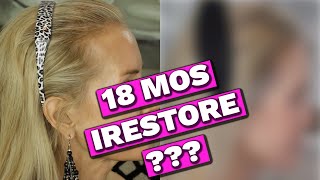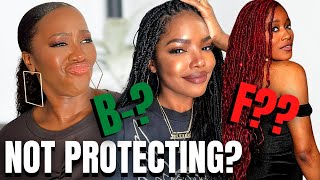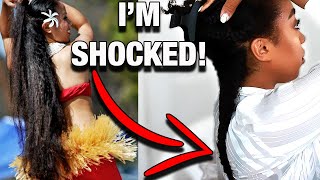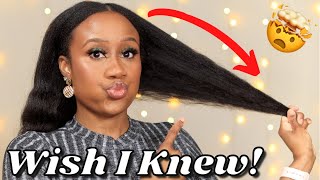How To Choose And Blend Essential Oils For Healthy Hair Growth
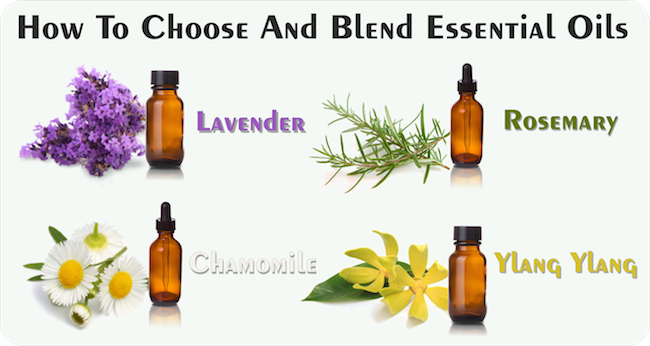
Keeping a healthy scalp is essential for promoting healthy hair growth. A lot of naturals suffer from various ailments, like dry or irritated scalp and excessive shedding and thinning. All of this can stunt your hair growth, causing your natural hair journey to come to a screeching halt.
Depending on your lifestyle, diet and hairstyles of choice, your hair and scalp is put through a lot of stress. Treating your locks to essential oil treatments can be great for your hair and scalp. But remember, simply adding to your regimen isn’t the answer — you also have to eliminate the problem.
Finding the source of your hair and scalp issues
There are a number of culprits that can be the cause of your hair growth issues. For starters, if you’re still using synthetic shampoos, conditioners, gels and leave-ins, then your path to being natural has been tainted and is showing through your irritations and hair fall.
It’s very important to know what ingredients are in your products, especially those that are labeled natural. A lot of them contain harsh chemicals that can cause damage to your hair and scalp, including propylene glycol, sodium lauryl sulfate, oleyl betaine and mineral oils* (like petroleum products which clog pores).
What you’re eating and drinking also plays a role in the health of your hair. You have to take accountability for your dieting habits, especially if you’re consuming things like large amounts of caffeine, sugar, processed and non-organic foods. So make sure to switch to a healthier diet. Smoking can also give your hair poor health.
During the warmer months, you may be tempted to swim in chlorinated pools. This can dry out your hair and cause shedding and scalp irritations. Also, the tap water you bathe and wash your hair with is likely contaminated with chlorine, fluoride, rust water, VOCs and so on. Get a shower filter* that eliminates majority of these toxins and take a rain check on the swimming pool.
How you style your hair is very important when you’re trying to retain length. Wearing it out all of the time, washing it too often (detangling wet hair constantly can cause unnecessary hair loss) and using heating tools like blow dryers* and flat irons*, can all limit your hair growth. Try wearing more protective styles and washing your hair less.
Lastly, it could be that you have thyroid issues, which is related to hair loss. If this is so, you can take kelp powder or tablets to promote healthy thyroid function and balance out your hormones.
Essential oils* for hair and scalp
Now that you have a plan for counteracting the source of the problem, now it’s time to revive your hair and scalp with essential oils*. Here is a list of the best ones for overall healthy hair and scalp:
Lavender: Helps to soothe and nourish your scalp, offering inflammation relief and treatment for flaky, dry scalp. If you suffer from hair loss, this will help, and at the same time, it will make your hair softer and shinier.
Rosemary: Likely, you’ve seen this essential oil in a variety of natural hair products already. It’s excellent for hair growth, graying and thinning. It also has antioxidants that help to protect your hair and scalp from damaging free radicals. It also fortifies your hair, making it stronger. Ideal for anyone who has scalp irritation, itchiness or dandruff.
Chamomile: Those who have excessively dry scalps, dandruff, eczema or even scalp acne can benefit from this essential oil.It also helps to improve the softness and luster of your locks.
Ylang Ylang: This oil helps to balance the normal production of sebum, which is much-needed for healthy scalp and hair. It nourishes your hair follicles and stimulates blood flow to your scalp, which in turn promotes hair growth.
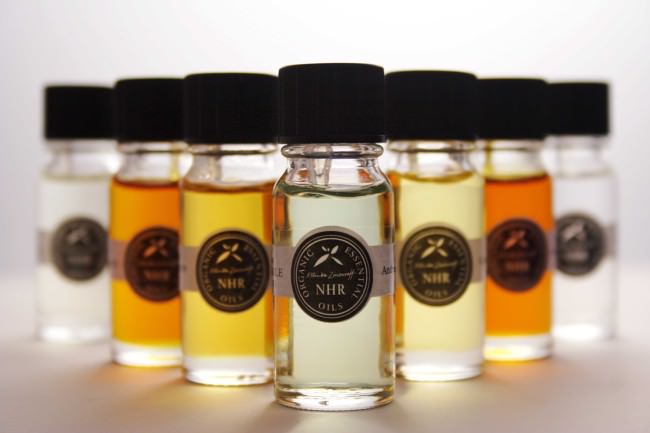
Essential oils* by condition
If you’re worried about specific problems with your hair and scalp, you can select your blend of essential oils this way:
Normal Hair: If your hair isn’t chemically damaged or dry, you can use the following essential oils* — rosemary, lemon, lavender, cedarwood, geranium, clary sage and thyme.
Dry Hair: If your hair appears dull and gets split ends easily, you need oils that will assist with stimulating your sebaceous glands, such as lavender, sandalwood, rosemary and geranium.
Hair Loss: If you notice that your hair is shedding more than it should, you can use oils that promote hair growth and prevent hair fall, including ylang ylang, lavender, rosemary, geranium, clary sage, cypress, sage and roman chamomile.
Creating and using your essential oil blend
Never directly apply essential oils to your scalp — they first need to be diluted using a carrier oil, water or even a natural shampoo you like to use.
If you have fine hair, you should use a carrier oil like grapeseed, apricot kernel* or peach kernel*. Those who have thick coarse hair should opt for oils like rosehip oil, olive oil*, avocado oil*, sesame oil*, hemp or evening primrose.
The number of essential oils you will be using will determine how many ml of carrier oil you will need.
1. For a teaspoon of oil (5ml), you want to use 3-5 drops of essential oils.
2. For 25ml of oil, use 7-25 drops of essential oils.
3. For 100ml of oil, use 20-60 drops of essential oils.
Using it this way, you massage the oil into your scalp and hair and allow it to sit for about an hour. However, some leave it on overnight for extra nourishment. Afterward, rinse it out using a natural shampoo.
Another option is to place 10-20 drops of essential oils into one cup of water and do a hair rinse. This should be used as a final rinse after you wash your hair. This will help to condition your hair.
Third option is to place the essential oils into your natural shampoo. You’ll need to base this off the size of your shampoo bottle. You can use about 5-10 drops of essential oil in a regular bottle of shampoo that’s around 16 fl oz.
You can use your essential blend each time you wash and style you hair. Mix up the carrier and essential oils to see which of them work best for your hair.

